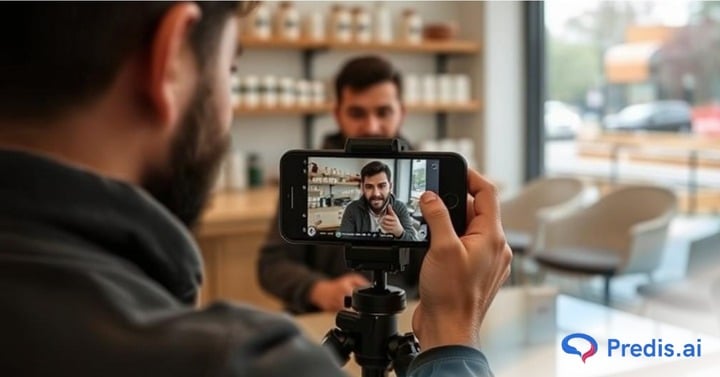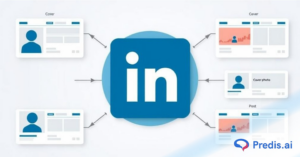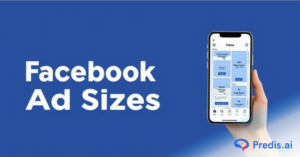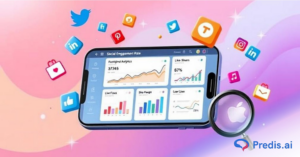Have you ever come across well-known creators showcasing a particular brand as you navigate through your social media feed? The products and services they showcase may vary from fashion, beauty products, and pet care products to accessories, electronics, and cars.
To make these brands stand out, creators build a gripping story, narrated through images and videos, which instantly grabs the attention of their followers. They tag the brands they feature and use relevant hashtags to make their posts go viral.
But why do these creators engage in such promotions? There are typically two possibilities:
- They want to share with their subscribers and followers that they use the brand’s items. Their content is an endorsement of the trust they have in the brand’s products or services.
- They are PAID to do so! (You can easily identify such types of posts as they carry a PAID PROMOTION/ SPONSORED tag with them.). Such a disclaimer helps bring transparency to the promotion and communicates that the promotion is a branded partnership, where the creator is compensated for their creative efforts.
Paid promotions are part of a social influencer’s business model, enabling them to monetize their efforts.
You may have a number of questions about this phenomenon. For instance, how much do influencers charge for such branded promotions? Do professional influencers have a rate card?
If yes, how to make an influencer rate card? Also, what are the going content creator rates?
Yes, you read that correctly. Major corporations pay well-known content producers to promote their goods and services to increase eCommerce sales and conversions. These creators inspire thousands, hundreds, and millions and thousands of followers and fans.
This trend has earned these artists a unique title. Today, they have come to be referred to as INFLUENCERS, and this kind of marketing is known as INFLUENCER MARKETING.
Influencer marketing is one of the best ways to connect with your target audience, especially on social media. For example, in the crypto world, crypto influencer marketing has proven highly effective. Influencer rates, however, may differ significantly based on the objectives of your firm, the sector, the platforms you’re targeting, the frequency of your postings, and other elements.
According to the State of Influencer Marketing Benchmark Report 2023, influencer marketing is expected to grow to be worth $24 billion by the end of 2024. In the survey, 67% of marketing agencies and brand respondents who budget for influencer marketing aim to raise their influencer marketing budget, while 23% aim to dedicate over 40% of their entire marketing budget to influencer campaigns.
As we can see, influencer marketing is gaining prominence in marketing budgets. It is one of the fastest-growing networks. However, some marketers are struggling to keep up with the ever-changing playing field.
With so many platforms to choose from, marketers must determine:
- Where to focus their efforts
- The type of ROI to anticipate
- How much time to invest in influencer marketing
How can you discover the perfect influencer for your brand without spending a fortune?
In this blog, we’ll discuss 6 factors that impact influencer rates. Then, we will move to the average influencer price sheet, micro-influencer rate card, and content creator rate cards in 2024 for the most prominent social media platforms.
We also touch upon how to identify the right social influencer who will collaborate with your brand to take it to another level.
What is an Influencer Rate Card?
Suppose a business charges to advertise on its website, TV channel, or magazine. In that case, they must be able to inform the purchaser how much it will cost. In a nutshell, what must they be paid for allowing advertisements in your community?
This is essentially what you do for brands. What distinguishes the two is that the outlet is your social media platform, and the audience is your loyal followers and admirers.
If you are an Instagram influencer who is also a content producer, your skills are even more valuable. This is because you can create professional content to give companies from the ground up. This content also contains a sprinkle of social media exposure and compliments from your audience.
Why Brands Should Create an Influencer Rate Card?
Influencer rate cards are not just for Influencers. Sometimes even Brands create their own rate cards, which is beneficial for their own reasons such as:
- You can be transperant about your requirements and the budget you are willing to pay.
- Compare between your rate card and Influencer rate cards to finalise a creator who better suit your requirements.
- By figuring out your comfortable prices ahead of time, you get to stay within budget.
To get the most impact out of your rate cards, make sure to provide a detailed list of the deliverables that you expect to receive. Follow this up with the timeline that you want it to be done by and the pricing you are willing to settle for.
Impact of an Influencer Rate Card
An influencer rate card determines the cost of an influencer’s services for a business. Both companies and influencers can use an influencer rate card.
Influencers might utilize a content creator rate card to provide certain services and packages to businesses in order to secure collaborations. Also, you can access their content creator rate card from the press kit.
On the other hand, brands employ an influencer rate card to compensate influencers appropriately.
Smaller influencers, such as nano and micro-influencers, may not have a formal rate card. On the other hand, macro-influencers and beyond are more likely to have a formal pricing sheet to share with brands.
Benefits for Businesses
- Informed Negotiations: Understand what you’re paying for and set realistic budgets.
- Streamlined Collaboration: Saves time by establishing clear pricing expectations upfront.
Benefits for Influencers
- Professionalism: Projects a professional image and positions you as a valuable resource.
- Fair Compensation: Ensures you’re paid adequately for your time, effort, and expertise.
Influencer Rate Card vs. Media Kit: Key Differences
In brief, an influencer media kit is leveraged during the pitching process to introduce the influencer, their digital reach and footprint, the unique selling points (USP) of the influencer, and their promotion ideas to the client.
On the other hand, an influencer rate card is required throughout the negotiating process to arrive at viable commercials. Essentially, your media kit ‘sells’ you, while your rate card’ prices’ you.
Influencer Media Kit
In the influencer marketing industry, an influencer media kit is a document that emphasizes crucial information and data about your blog or website that a business would be interested in learning about.
An influencer media kit is often sent to businesses with whom you wish to collaborate as a means of introducing yourself and demonstrating why cooperating with you would be advantageous to their company’s goals and objectives.
Influencer Rate Card
An Influencer Rate Card, on the other hand, is a document that calculates the value/ price of products or services when selling them. It usually includes information about the price for each product or service you give the brand, as well as prospective packages or bundles.
You can undoubtedly provide a summary of your services in your media kit to preserve your worth. But remember to refrain from including a fixed price tag for the time being in order to keep the discussion open.
This is because every brand has unique goals, needs, and outcomes, and the effort involved will align with these.
What Should you include in an Influencer Rate Card?
Since Influencer rate cards are vital to establish a professional relationship with a brand and form the basis for negotitations, it is essential to be as detailed as possible in here. So, here is a comprehensive breakdown on what you should include in your Influencer rate card:
- Identify yourself: Your Influencer rate should contain all your contact information, your name and every social media channel that you have.
- Your audience: Give a detailed breakdown of your audience, the niche that you belong to, and the average engagement rates that you recieve.
- Service list: Below every approximate price tiers, give a list of the services that you will offer such as sponsored post, in-person visits, shop openings and so on. Always, make sure to mention that the packaged can be customised based on brand requirements. Make it a multi-tiered pricing structure based on the extent of services that you provide.
- Terms and conditions: List any conditions tha you might have such as cancellation policies, revision requests, payment plans, exclusivity and so on.
- Content quality and timeline: Give an idea on the type of content quality they can expect from you. Always make sure to underpromise so you can overdeliver later. Also, let them know the timeline with which they will receive each content piece and when the deadline is for each.
Factors that Affect Influencer Rate Card
A variety of factors might determine how much an influencer costs for their services. Also, it’s uncommon to find an influencer who charges a flat rate.
This is because influencer marketing is a viable business, and influencers base their pricing on what businesses are willing to pay. While this list does not include all of the factors that go into establishing how much an influencer could charge, it offers enough insight to build a rate card.
Let’s examine these and other parameters more closely so you know exactly what you’re paying for.
1. Influencer Reach
The influencer’s reach is the number of individuals who can be reached through their platform. This value is calculated by the number of followers or subscribers of the influencer across the platforms they are present on. Generally, the more followers an influencer has, the higher their rates will be.
Influencers are classified into the following categories based on their reach:
- Nano-influencers: Having 1,000–5,000 followers
- Micro-influencers: Having 10,000–50,000 followers
- Mid-tier influencers: Having 60,000–200,000 followers
- Macro-influencers: Having 500,000–1,000,000 followers
- Mega-influencers: Having 1,000,000+ followers
You may find variations on this breakdown. For example, some marketers consider a micro-influencer to begin at 1,000 and do not designate nano-influencers in this manner.
2. Influencer Demand
If you want a seasonal social media campaign, you can expect to pay a premium for it.
This is classic economics: higher rates result from more demand. If you are interested in a highly famous influencer, you may encounter this problem outside of seasonal promotions.
3. Engagement of the Followers
Today, businesses’ focus is shifting from reach to engagement, especially since it is impossible to know if influencer reach comprises authentic followers.
Hence, the rate of engagement on an influencer’s postings also influences their rate. The number of views, likes, shares, comments, and so on is used to determine engagement.
Influencer price sheets differ depending on how much interaction an influencer receives on their organic vs. paid content. You would believe that influencers with more followers will have higher interaction rates; however, this is not always the case.
If an influencer has a large following but little engagement, it’s not worth partnering with them. Instead, an influencer with a small reach and great interaction will provide better outcomes.
This is because influencer marketing aims to increase brand awareness. When social media users have good opinions about your brand and help to establish your business’s online community, your brand’s reputation grows.
While the higher statistics may captivate you at first, keep in mind that working with a smaller influencer is considerably more cost-effective. Effectively, a comparably smaller influencer with a high engagement rate will yield a considerably greater ROI.
4. Social Media Platform
The platform significantly impacts an influencer’s rate card. The same influencer will charge different rates for Instagram and YouTube.
Some influencers may charge the same amount for the same type of post regardless of the channel. But the rates are far more likely to vary. After all, each social media platform has a distinct audience type, and creative resources vary as well.
5. Industry or Niche
In general, the more influencers in a niche there are, the more competitive their rates will be. If you’re searching for a beauty influencer, for example, you’ll have lots of alternatives and bargaining power.
You’ll want to discover an influencer who is knowledgeable about your industry. Popular niches (such as beauty and fitness) will have more influencers available. Also, the cost will most likely be lower than in niches with fewer accessible influencers.
You may also look at the industries that an influencer’s audience prefers to ensure that hiring them for your company makes sense. On the other hand, if you’re searching for an influencer in a very particular field, they may charge whatever they want, within reason, of course.
6. Content-Type
You’ll agree that different types of content require different amounts of time and effort. The type of content you want from an influencer will also impact the rate.
This is due to the fact that influencers will need to invest time, energy, and resources into creating the content. Also, different types of content necessitate different requirements.
Consider how much content the influencer will need to develop and whether they or you will provide the required resources. The more effort it takes to develop the content you’re requesting, the more it will cost.
Step-by-Step Guide to Building Your Influencer Rate Card
For some who are entering the influencer field for the first time, creating and understanding an Influencer Rate Card that works perfectly for them can be a little confusing and tough.
Consider a business charging for advertising space on their website. Similarly, influencers deserve compensation for showcasing brands to their dedicated audience. An influencer rate card outlines the costs associated with an influencer’s services, enabling clear communication between brands and influencers.
Here are some simple steps one can follow to create the perfect influencer rate card.
1. Define Your Services
- List the types of services you offer (e.g., sponsored posts, product reviews, giveaways)
- Specify your active platform (e.g., Instagram, YouTube, TikTok)
- Include any additional services you provide (e.g., content creation, event appearances)
2. Determine Your Pricing Structure
- Look for industry benchmarks and rival pricing
- Take into account variables that could affect your cost (e.g., audience size, engagement rate, niche)
- Set a price structure (e.g., flat fee, cost per thousand followers, cost per engagement)
3. Set Your Rates
- Establish different rates for each service you offer
- Advertise offering package deals or discounts for long-term collaborations
- Consider the brand’s budget and campaign requirements while negotiating rates
4. Outline Terms and Conditions
- Specify the deliverables and timeline for each service
- Include any exclusivity or non-compete clauses
- Define payment terms and cancellation policies
5. Design Your Rate Card
- Use a professional and visually appealing template
- Include your branding elements (e.g., logo, colors)
- Put the information in a format that is simple to understand.
6. Update and Customize
- Review and update your rate card frequently to reflect any modifications to your services or price
- Customize the rate card for each brand collaboration, if necessary
- Be open to negotiation and adjustments based on the brand’s requirements and budget
Stand Out with Influencer Content 🌟
How Much Does An Influencer Earn Per Post?
The typical influencer charges are determined by the number of followers an influencer has, the social media platforms they use, and the engagement rate on their social pages.
It is commonly computed as the price per thousand followers or subscribers for a single post. The following are the usual influencer rates for the five major social media platforms, with influencer rate sheet examples.
We’ll examine the average remuneration for influencers on each of the main social media platforms and each highly popular platform.
Instagram Influencer Rate Card
Source: Giphy
- Nano-influencers: Charge $10–$100 per post
- Micro-influencers: Charge $100–$500 per post
- Mid-tier influencers: Charge $500–$5,000 per post
- Macro-influencers: Charge $5,000–$10,000 per post
- Mega-influencers: Charge $10,000+ per post
- Celebrities: Varies, but $1+ million on an average
TikTok Influencer Rate Card
Source: Giphy
- Nano-influencers: Charge $5–$25 per post
- Micro-influencers: Charge $25–$125 per post
- Mid-tier influencers: Charge $125–$1,250 per post
- Macro-influencers: Charge $1,250–$2,500 per post
- Mega-influencers: Charge $2,500+ per post
YouTube Influencer Rate Card
Source: Giphy
- Nano-influencers: Charge $20–$200 per video
- Micro-influencers: Charge $200–$1,000 per video
- Mid-tier influencers: Charge $1,000–$10,000 per video
- Macro-influencers: Charge $10,000–$20,000 per post
- Mega-influencers: Charge $20,000+ per post
These are influencer pricing examples of generic posts. If you want customized videos, plan to pay at least double the costs listed below.
Facebook Influencer Rate Card
Source: Giphy
- Nano-influencers: Charge $25–$250 per post
- Micro-influencers: Charge $250–$1,250 per post
- Mid-tier influencers: Charge $1,250–$12,500 per post
- Macro-influencers: Charge $12,500–$25,000 per post
- Mega-influencers: Charge $25,000+ per post
Twitter (X) Influencer Rate Card

Source: Freepik
- Nano-influencers: Charge $2–$20 per post
- Micro-influencers: Charge $20–$100 per post
- Mid-tier influencers: Charge $100–$1,000 per post
- Macro-influencers: Charge $1,000–$2,000 per post
- Mega-influencers: Charge $2,000+ per post
Beyond the Numbers: Finding the Right Influencer for Your Brand
One of the top mistakes companies make is to choose the wrong influencer to represent their brand.
For instance, you may choose an influencer because they are in high demand and you have the budget to match their rate cards. However, they may not know anything about your brand, industry, or product.
For instance, choosing a beauty brand influencer to represent cars may not deliver the ROI your company desires.
Finding the ideal influencer for your company requires balancing what you can pay and their influencer prices.
If you don’t know how much you can pay, it will be considerably more challenging to determine whether the influencer you want will fit inside your budget for the duration of your requirement.
When creating your budget, keep in mind your influencer marketing goals, as well as whether you’ll be employing influencer marketing tools or an influencer marketing agency.
Influencer Marketing Agencies
Different influencer marketing agencies exist to link influencers with companies who wish to hire them, but their services do not end there. These agencies will assist businesses in developing an influencer marketing strategy, implementing that strategy, and managing influencer marketing campaigns.
Because they work so closely with influencers, they have a strong grasp of influencer rates. They can also assist clients in finding a fantastic influencer while staying within their budget.
Hence, your business can consider hiring such an agency to do the legwork and be the liaison between you and the influencers your company hires. However, it makes sense to do one project and review the ROI delivered by the agency before putting them on your rolls permanently.
Influencer Marketing Goals
The amount you should budget for influencer marketing is primarily determined by the objectives you want to achieve with your influencer marketing campaigns and the strategies you’ll employ to achieve them.
Some common objectives include enhancing brand exposure, increasing social engagement, and boosting sales. Once you’ve established your goals and devised a strategy, you’ll be better positioned to discover influencers who can match your demands while staying within your budget.
Focus on Alignment
Prioritize influencers who resonate with your brand, industry, and target audience. While follower count might seem tempting, prioritizing influencers who resonate with your brand identity, industry, and target audience is crucial for a successful campaign.
Influencers build communities around shared interests. Partnering with an influencer whose audience aligns with yours leverages their existing trust and credibility. Their endorsement carries more weight, leading to higher engagement and potential conversions.
Influencers with a niche audience aligned with your target market are more likely to spark genuine interest and engagement. Their content resonates with a community already receptive to your brand’s message. For instance, a sustainable clothing brand partnering with an eco-conscious fashion influencer would reach a highly relevant audience.
Consider Micro-Influencers
Studies consistently show that micro-influencers often generate higher engagement (likes, comments, shares) compared to mega-influencers. Their smaller, more engaged communities foster deeper connections, leading to better brand reception.
Micro-influencers typically charge less than their macro-influencer counterparts. This allows you to stretch your marketing budget further and potentially collaborate with multiple micro-influencers, reaching a wider audience segment within your niche.
They often specialize in specific niches. Partnering with a micro-influencer who caters to your exact target audience allows for a more targeted approach and potentially higher conversion rates.

Budget-Friendly Strategies: Optimizing Influencer Marketing Costs
Several influencer marketing platforms are available to help you locate influencers for your company. For instance, there are a plethora of free influencer marketing tools available to assist companies in finding influencers based on search parameters.
There are also several platforms that you can use to connect with influencers, but which one is right for you? Here are a few things to consider when choosing an influencer marketing platform:
- Goals – What are you looking to achieve with your influencer marketing campaign? If you’re looking to build brand awareness, you’ll want to choose a platform with a large reach. If you’re looking to drive sales, you’ll want to choose a platform with a robust influencer network and tools to help you track conversions.
- Budget – How much are you willing to spend on your influencer marketing campaign? Some platforms charge a monthly fee, while others take a percentage of your budget.
- Audience – Who is your target audience? Make sure the platform you choose has an influencer network that reaches your target audience. An audience misfit can result in serious wasted budgets.
- Value Proposition: Communicate the value you offer to influencers beyond just payment. This could be product samples, early access, or brand association, attracting engaged partners who believe in your brand.
- Content Repurposing: Encourage influencers to create content in formats you can repurpose across different platforms (e.g., blog posts from Instagram captions). This maximizes reach without additional content creation costs.
- Long-Term Partnerships: Building long-term relationships with influencers fosters trust and allows for deeper brand integration in their content. Negotiate lower rates for sustained collaborations that deliver consistent brand messaging.
- Barter Agreements: Explore offering free products or services in exchange for influencer promotion. This can be mutually beneficial, especially for smaller brands or startups wanting to gain exposure.
For instance, one popular influencer marketing platform is BuzzSumo. BuzzSumo allows you to find influencers in your industry, track their activity, and see how they’re connected to other influencers. This can help identify key players in your field and understand how to best reach them.
Another popular influencer marketing platform is IZEA (earlier known as TapInfluence).
IZEA is an influencer marketplace that focuses on connecting brands with influencers who create quality content. They also offer many tools to help you measure the success of your campaigns.
No matter which platform you choose, it’s important to do your research and select the one that’s right for you.
Wrapping It Up
An effective influencer marketing strategy does not have to be expensive. You can quickly identify influencers within your budget and use their skills to meet your influencer marketing objectives. It is critical to understand how to determine influencer rates and give reasonable remuneration for their services.
Use the standard micro influencer rate card to obtain a general estimate of how much you should pay an influencer for their services. Then, consider the other aspects and add up the extras to arrive at a final price.
One piece of advice is to be flexible with influencer prices when negotiating. Don’t commit to a single amount; instead, provide some wiggle space.
As your brand expands in the future, communications and management with influencers can become very challenging to handle.
If you need support related to social media marketing, sign up for Predis.ai, and we’ll assist in making your influencer marketing campaigns a success. Be sure to follow our blog for more tips and strategies on how to build an effective influencer marketing strategy and accelerate your business growth.
FAQ:
An influencer rate card details the pricing and services offered by an Influencer. This document helps in brand collaborations and includes details such as content formats, audience demographics and engagement metrics.
The Influencer rate card helps sets expectations with the brand by clearly outlining the deliverables. This way there is no confusion in later stages of brand negotiation.
When deciding a rate to put on your rate card, consider the following factors such as:
1. Your followers count
2. Average engagement rate
3. Niche
4. Content quality
5. Competitor pricing and so on.
Related Articles



















